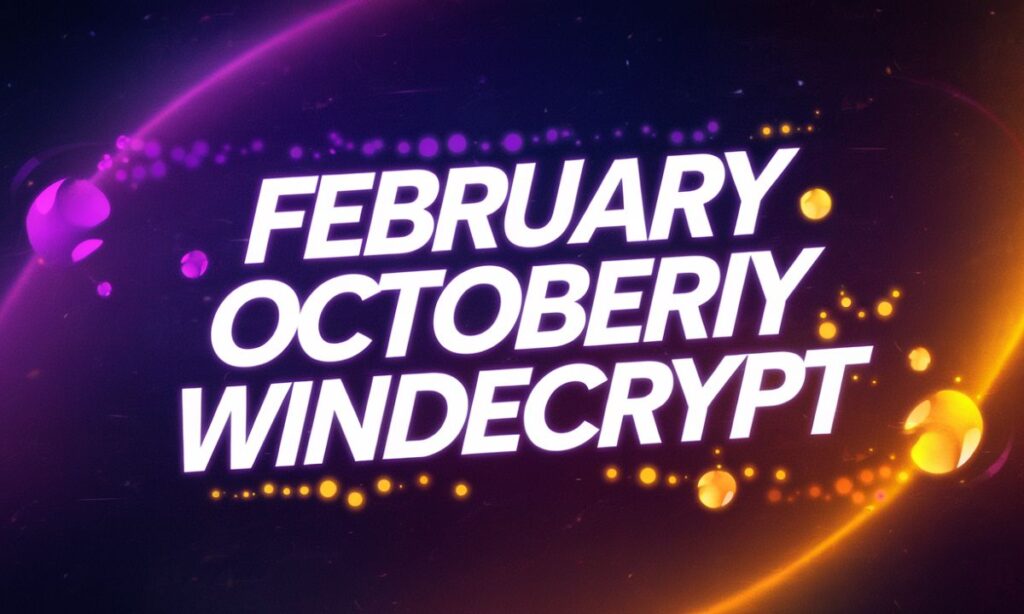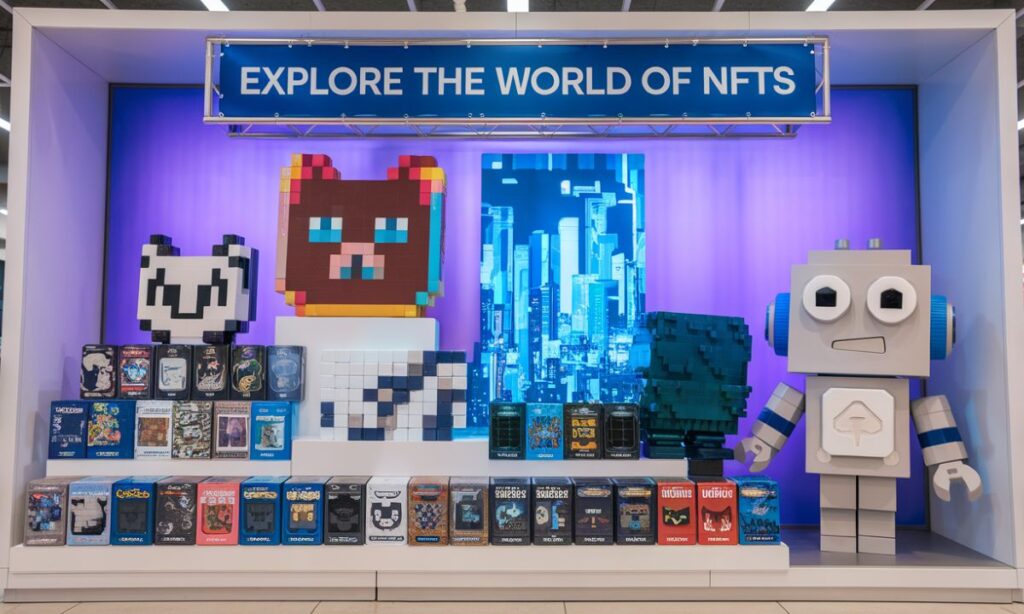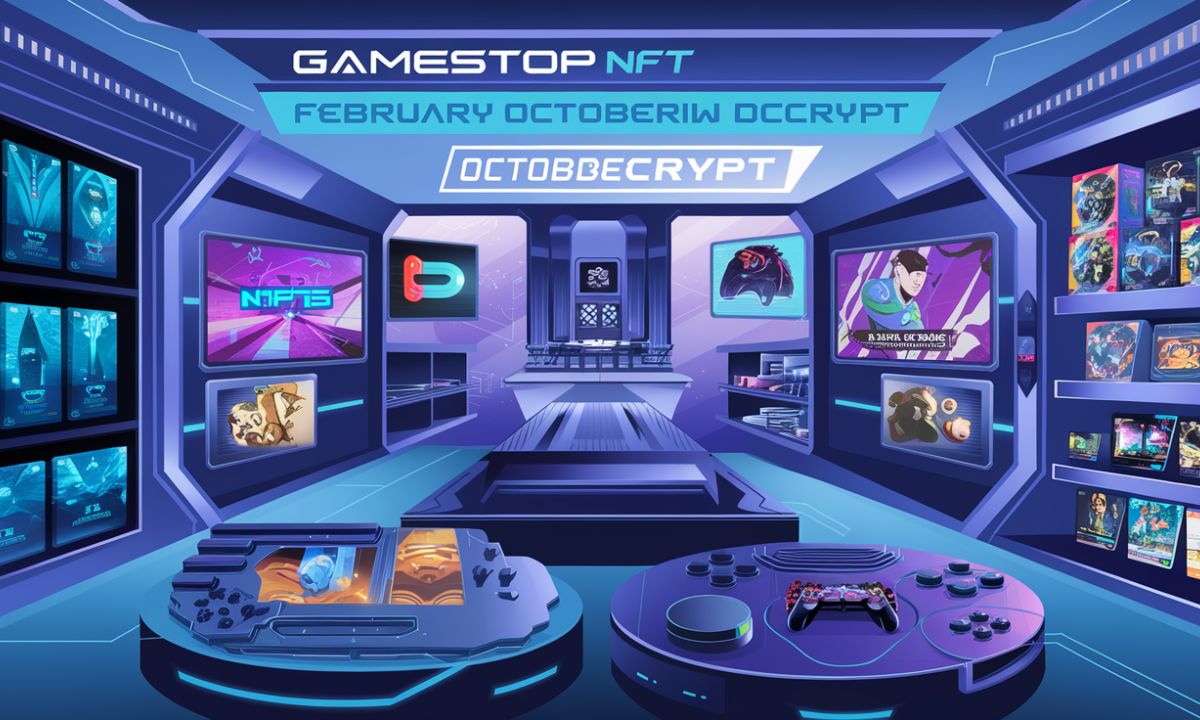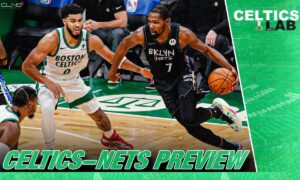In the annals of financial history, few stories have captured the public imagination quite like the GameStop saga. From the February frenzy to the October innovations, this tale of retail investors taking on Wall Street has become a defining moment of the digital age.
The GameStop story isn’t just about a short squeeze or a momentary blip in the stock market. It’s a narrative that encapsulates the power of social media, the rise of retail investing, and the transformative potential of blockchain technology.
As we unpack this story, we’ll see how GameStop, under the leadership of Ryan Cohen, has pivoted from a struggling brick-and-mortar retailer to a pioneer in the digital asset space.
Let’s dive into the fascinating journey of GameStop’s NFT marketplace, exploring its evolution from the February launch to the game-changing Octoberirwindecrypt feature.
What Are NFTs?
Before we delve into GameStop’s foray into the world of digital assets, it’s crucial to understand the foundation of this revolution: Non-Fungible Tokens (NFTs). These unique digital certificates of ownership have taken the world by storm, reshaping our concept of digital property rights.
NFTs represent a paradigm shift in how we perceive and interact with digital content. Unlike cryptocurrencies such as Bitcoin or Ethereum, which are fungible (meaning each unit is interchangeable), NFTs are unique digital assets. This uniqueness is what gives them their value and appeal, especially in the realms of art, collectibles, and gaming.
Key Characteristics of NFTs
- Uniqueness: Each NFT is one-of-a-kind, like a digital fingerprint.
- Immutability: Blockchain technology ensures the authenticity and ownership history of NFTs can’t be altered.
- Interoperability: Many NFTs can be used across different platforms and games.
- Programmability: Smart contracts can imbue NFTs with specific functionalities.
- Divisibility: Some NFTs can be fractionally owned, allowing for shared ownership.
- Transparency: The blockchain provides a clear record of ownership and transaction history.
“NFTs are to digital assets what a deed is to a house – proof of ownership in the digital realm.” – Ryan Cohen, GameStop Chairman
This quote from Ryan Cohen encapsulates the revolutionary nature of NFTs. They bring the concept of scarcity and provable ownership to the digital world, opening up new possibilities for creators, collectors, and gamers alike.
GameStop Shift Towards Digital Assets
GameStop’s pivot to digital assets marked a turning point in the company’s history. Facing challenges in the traditional retail space, GameStop embraced blockchain technology and NFTs as a path to reinvention.
This bold move, spearheaded by Ryan Cohen, transformed GameStop from a struggling brick-and-mortar retailer into a digital innovator, capturing the attention of both the gaming community and Wall Street.
Background
The GameStop story is one of David versus Goliath, a tale of retail investors banding together to challenge the status quo of Wall Street. But beyond the short squeeze that made headlines, a more profound transformation was taking place.
GameStop’s journey from a struggling retailer to a digital innovator is a testament to the power of adaptation in the face of disruption. The company’s traditional business model, centered around physical game sales, was under threat from digital downloads and streaming services. This existential challenge set the stage for a dramatic pivot.
Key milestones in GameStop’s transformation:
- 2019: Activist investors push for strategic changes
- 2020: Ryan Cohen acquires a significant stake in the company
- 2021: The infamous short squeeze brings global attention to GameStop
- 2021: Announcement of plans to enter the NFT market
- 2022: Launch of the GameStop NFT marketplace
GameStop NFT Marketplace
In February, GameStop unveiled its NFT marketplace, marking a decisive step in its digital transformation. This platform wasn’t just another NFT marketplace; it was a statement of intent, signaling GameStop’s commitment to reinventing itself for the blockchain era.
The launch of the NFT marketplace represented a bold move by GameStop to position itself at the forefront of the Web3 revolution. By leveraging its brand recognition in the gaming community and its newfound status as a symbol of retail investing power, GameStop aimed to create a unique value proposition in the crowded NFT space.
Features of the GameStop NFT Marketplace

The GameStop NFT marketplace stands out with its user-friendly interface and robust features:
- Support for multiple cryptocurrencies
- Integration with popular Web3 wallets
- Creator-friendly tools and royalty systems
- Curated collections from top artists and game developers
- Low transaction fees through Layer 2 scaling solutions
- Seamless integration with GameStop’s existing rewards program
| Feature | Description | Impact |
| Multi-chain support | Compatibility with Ethereum, Loopring, and ImmutableX | Increased accessibility and lower transaction costs |
| Creator dashboard | Comprehensive tools for minting and managing NFTs | Empowers artists and game developers |
| Social integration | Built-in social features for community engagement | Fosters a vibrant ecosystem of creators and collectors |
| Fiat on-ramp | Ability to purchase NFTs with traditional currencies | Lowers barrier to entry for mainstream adoption |
| Mobile app | Native iOS and Android applications | Enhances user experience and accessibility |
These features were designed to address common pain points in the NFT space, such as high gas fees and complex user interfaces. By focusing on user experience and creator empowerment, GameStop aimed to differentiate itself from existing marketplaces and attract both crypto natives and newcomers to the space.
February 2023 Developments
February 2023 was a crucial month for GameStop’s NFT venture. The company launched its NFT marketplace, introducing a user-friendly platform that bridged the gap between traditional gaming and blockchain technology.
Strategic partnerships with game developers and artists were announced, setting the stage for a vibrant ecosystem. These early developments laid the foundation for GameStop’s ambitious plans in the digital asset space.
Key Updates in February
The February launch was just the beginning. Throughout the month, GameStop rolled out several key updates:
- Introduction of exclusive gaming NFTs
- Partnership announcements with major game studios
- Integration of Layer 2 scaling solutions to reduce gas fees
- Launch of a creator fund to support indie developers
- Implementation of a staking mechanism for GameStop’s native token
These updates were not just incremental improvements; they represented a strategic effort to build a comprehensive ecosystem around GameStop’s NFT offerings. By focusing on gaming-related NFTs and fostering relationships with developers, GameStop leveraged its core strengths while pushing into new territory.
Strategic Partnerships
GameStop’s collaboration with tech giants and game developers set the stage for a thriving ecosystem. These partnerships weren’t just about NFTs; they were about reimagining the future of gaming and digital ownership.
Key partnerships announced in February included:
- Collaboration with a major AAA game studio for in-game NFT integration
- Partnership with a leading blockchain analytics firm to enhance platform security
- Alliance with a popular e-sports organization for exclusive NFT drops
- Integration with a well-known metaverse project for cross-platform compatibility
These strategic moves positioned GameStop not just as an NFT marketplace, but as a key player in the broader Web3 gaming ecosystem. By bridging the gap between traditional gaming and blockchain technology, GameStop aimed to create a unique value proposition for both gamers and investors.
The October 2023 Update
The October update, highlighted by the introduction of Octoberirwindecrypt, represented a quantum leap in GameStop’s NFT capabilities. This feature brought enhanced security, cross-platform compatibility, and integration with virtual reality platforms.
The update also showcased GameStop’s commitment to innovation, solidifying its position as a leader in the NFT gaming space and opening up new possibilities for developers and players alike.
Introduction of New Features
October brought the most significant update yet: Octoberirwindecrypt. This revolutionary feature, named after GameStop’s commitment to transparency and innovation, introduced:
- Advanced encryption for enhanced security
- Seamless cross-platform NFT transfers
- Integration with virtual reality platforms
- AI-powered content moderation system
- Decentralized identity solutions for user authentication
The Octoberirwindecrypt update represented a quantum leap in GameStop’s NFT capabilities. By addressing key concerns around security, interoperability, and user experience, GameStop solidified its position as a leader in the NFT space.
“Octoberirwindecrypt isn’t just an update; it’s a reimagining of what’s possible in the world of digital ownership.” – GameStop CTO, in an October press release
Collaboration with Game Developers
The Octoberirwindecrypt update wasn’t just about technology; it was about creating new possibilities for game developers and players alike. GameStop’s partnerships with leading studios opened up new horizons for in-game economies and player-owned assets.
Case Study: Project Nexus
One of the most exciting collaborations to emerge from the October update was Project Nexus, a joint venture between GameStop and a consortium of indie game developers. This project aims to create a fully interoperable gaming universe where NFTs can be used across multiple games and platforms.
Key features of Project Nexus:
- Cross-game asset compatibility
- Player-driven economy with real-world value
- Decentralized governance allowing players to vote on game updates
- Integration with GameStop’s NFT marketplace for seamless trading
Project Nexus serves as a proof of concept for GameStop’s vision of a blockchain-powered gaming future, demonstrating the potential of NFTs to revolutionize game design and player engagement.
The Impact of GameStop’s NFT Strategy

GameStop’s foray into NFTs had far-reaching consequences for the gaming industry and beyond. It empowered players with true ownership of digital assets, catalyzed the rise of play-to-earn gaming models, and created new economic opportunities for creators.
The strategy also reshaped GameStop’s brand identity, attracting a new generation of tech-savvy customers and investors, and positioning the company at the forefront of the Web3 revolution.
On the Gaming Community
The ripple effects of GameStop’s NFT strategy have been profound:
- Players now have true ownership of their in-game items
- A new era of play-to-earn gaming has emerged
- Community-driven game development is on the rise
- Increased focus on long-term engagement rather than short-term monetization
- Blurring of lines between gamers, creators, and investors
These changes represent a fundamental shift in the relationship between players, developers, and gaming platforms. By giving players true ownership of their digital assets, GameStop has helped catalyze a new gaming paradigm that emphasizes player agency and economic participation.
Economic Opportunities for Creators
The GameStop NFT marketplace has become a launchpad for digital artists and game developers:
- Success stories of indie developers earning life-changing sums
- Established studios exploring new revenue streams
- The rise of a new class of digital entrepreneurs
- Emergence of NFT-based funding models for game development
- Creation of new job roles such as “NFT Economy Designer” and “Blockchain Game Architect”
These economic opportunities extend beyond just creators. Players, too, have found new ways to monetize their gaming skills and assets, leading to the rise of “gaming guilds” and other novel organizational structures in the gaming world.
Reshaping GameStop’s Brand Identity
From a brick-and-mortar retailer to a Web3 pioneer, GameStop’s transformation has been nothing short of remarkable. The company’s bold moves in the NFT space have attracted a new generation of tech-savvy investors and gamers.
This transformation is reflected in various metrics:
- Shift in customer demographics towards younger, more tech-savvy users
- Increase in digital revenue as a percentage of total sales
- Growing engagement with GameStop’s online communities and social media channels
- Rising stock price and market capitalization
- Attraction of top tech talent to GameStop’s development teams
By positioning itself at the intersection of gaming, blockchain, and retail investing, GameStop has created a unique brand identity that resonates with the digital natives of today and tomorrow.
Challenges and Criticisms
Despite its successes, GameStop’s NFT venture hasn’t been without its challenges:
- Environmental concerns over blockchain energy consumption
- Regulatory uncertainties in different jurisdictions
- Skepticism from traditional gaming communities
- Volatility in the broader cryptocurrency and NFT markets
- Concerns about the long-term sustainability of play-to-earn models
GameStop has taken steps to address these challenges, such as partnering with eco-friendly blockchain solutions and engaging in dialogue with regulators. However, these issues remain ongoing concerns that the company must navigate as it continues to expand its NFT offerings.
Future Prospects

Looking ahead, GameStop’s future in the digital asset space appears bright but challenging. Plans for expanding the ecosystem include developing a GameStop-powered metaverse, exploring DeFi integrations, and creating decentralized gaming platforms.
The company aims to leverage cutting-edge Web3 technologies while strengthening community engagement. However, navigating regulatory uncertainties and addressing environmental concerns will be crucial as GameStop continues to push the boundaries of blockchain gaming and digital ownership.
Expanding the Ecosystem
GameStop’s vision extends far beyond its current offerings:
- Plans for a GameStop-powered metaverse
- Exploration of DeFi integrations
- Potential for NFT-based loyalty programs
- Development of blockchain-based game streaming services
- Creation of a decentralized app store for Web3 games
These initiatives demonstrate GameStop’s commitment to not just participating in the Web3 ecosystem, but actively shaping its future. By leveraging its brand recognition and newly acquired technical expertise, GameStop is positioning itself as a key infrastructure provider for the next generation of digital experiences.
Embracing Web3 Technologies
The future of GameStop lies in its ability to leverage cutting-edge Web3 technologies:
- Decentralized governance models for community decision-making
- Integration with emerging blockchain gaming platforms
- Development of cross-chain NFT standards
- Exploration of zero-knowledge proofs for enhanced privacy
- Implementation of sharding techniques for improved scalability
By staying at the forefront of blockchain innovation, GameStop aims to create a future-proof platform that can adapt to the rapidly evolving Web3 landscape.
Strengthening Community Engagement
At the heart of GameStop’s strategy is its commitment to its community:
- Regular AMAs with leadership, including Ryan Cohen
- Community-driven content curation
- Educational initiatives to onboard new users to the world of NFTs
- Hackathons and developer grants to foster innovation
- Integration of social features directly into the NFT marketplace
These community-centric initiatives are designed to create a self-sustaining ecosystem where users are not just consumers, but active participants in shaping the platform’s future.
Conclusion about Gamestop NFT February Octoberirwindecrypt
From the February launch to the Octoberirwindecrypt revolution, GameStop’s journey into the world of NFTs and digital assets has been nothing short of extraordinary. As we look to the future, one thing is clear: the GameStop saga is far from over. With its bold vision, strategic partnerships, and commitment to innovation, GameStop is not just adapting to the digital age – it’s helping to shape it.
The story of GameStop’s NFT marketplace is more than just a tale of digital transformation; it’s a testament to the power of community, the potential of blockchain technology, and the enduring spirit of innovation that continues to drive the gaming industry forward.









